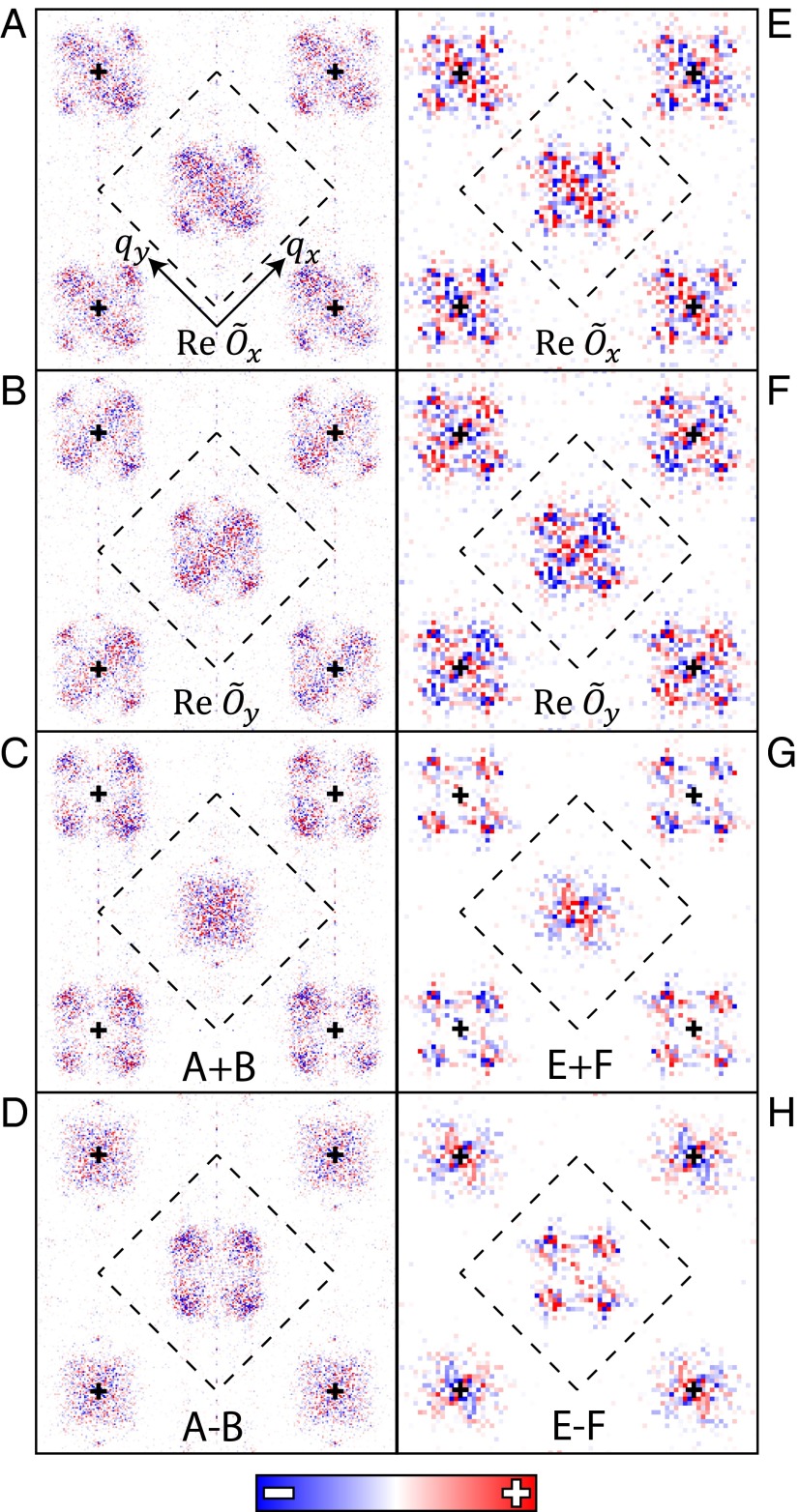Fig. 3.
Sublattice phase-resolved analysis revealing d-form factor DW. (A) Measured from R(r) in Fig. 2A. The four DW peaks at Q and the DW Bragg-satellite peaks exist but are all poorly resolved. (B) from Fig. 2A; again, the four DW peaks at Q and the DW Bragg-satellite peaks exist but are all poorly resolved. (C) Measured from A and B. The four DW peaks at Q are not detectable whereas the DW Bragg-satellite peaks are enhanced and well resolved. Compared to Fig. 1E, these are the expected phenomena of a d-form factor DW (with spatial disorder in ϕD). (D) Measured from A and B. The primary DW peaks at Q are strongly enhanced whereas the DW Bragg-satellite peaks have disappeared. Compared to Fig. 1F, these are once again the expected phenomena of a dFF-DW. (E) Measured for an NaCCOC sample with p ∼ 12 ± 1%. The DW peaks at Q, and the DW Bragg-satellite peaks exist but are poorly resolved. (F) Measured for NaCCOC. The DW peaks at Q, and the DW Bragg-satellite peaks exist but are poorly resolved. (G) Measured from E and F. The four DW peaks at Q are no longer detectable whereas the DW Bragg-satellite peaks are enhanced and well resolved. Importantly (modulo some phase noise) the Bragg-satellite peaks at inequivalent Q′ and Q′′ exhibit opposite sign. Compared to Fig. 1E, these are the expected phenomena of a dFF-DW. (H) Measured from E and F. The four DW peaks at Q are enhanced whereas the DW Bragg-satellite peaks have disappeared. Compared to Fig. 1F, these confirm the dFF-DW conclusion.

